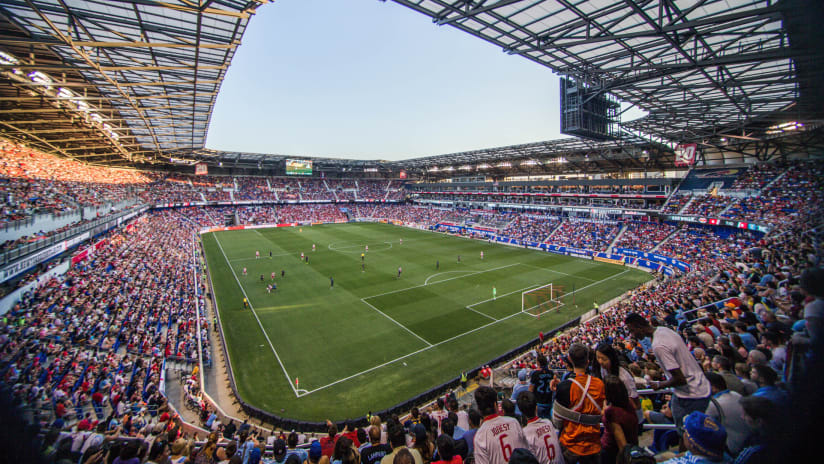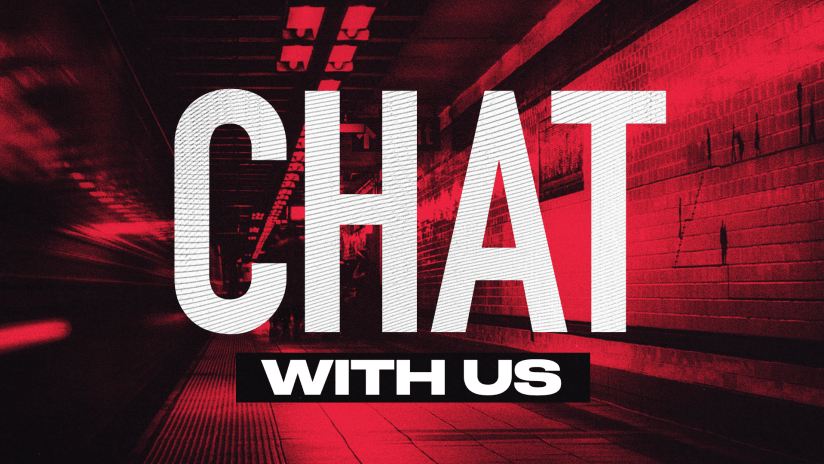This is the first of a three part series from New York Red Bulls team writer, Frank Giase showcasing the youth and development programs that RBNY has to offer.
On an early August morning at the Peddie School in Hightstown, N.J., 180 kids are pushing themselves in soccer drills and scrimmages in an effort to impress the coaches. They are fully aware that one beautiful goal, one perfect pass, one great defensive play or one acrobatic save can earn them a place in the Red Bulls Academy program.
That’s right all you moms and dads out there, soccer has joined baseball, football, basketball and hockey as an avenue for your child to become a professional athlete. And if not, there’s no downside. The skills they will have learned will make them not only better high school players, but put them in a greater position to receive a college soccer scholarship.
“The essence of the camp is to eat, breathe and sleep soccer,” said Simon Barrow, manager of the Red Bulls’ Regional Development Schools (RDS). “When the day ends they go back to the dorms to play Xbox. At night we view games or have viewing parties. It’s all really about getting them to associate themselves with the club. The reality is, if you go with the hard math, a fraction of one percent of these kids is going to make it to the first team. The likelihood is slim, but what we can do is foster a love for the team.”
But the percentage of players moving through the academy and signing with the first team has grown in recent years. Just recently, the Red Bulls finished a game with three homegrown players – Matt Miazga, Connor Lade and Sean Davis – on the field.
“This program serves as the stepping stone to the academy,” Barrow said. “Our academy teams, which start at U-12 and go through U-23, are fed by this system, so the kids that are in this camp are assessed for the academy and go on to that stage. Tyler Adams was in this program three years ago. It’s crazy to think we had kids at a young age that went on to score against Chelsea.”
In the 4-2 victory over the English Premier League champions July 22 at Red Bull Arena, Davis scored two goals and the 16-year-old Adams netted another. Franklin Castellanos, a former member of the Red Bulls U-23 team who plays for Red Bulls II, also scored in the game.
“I’ve been managing the program for 10 years but it’s just recently become a reality,” Barrow said. “I always told the kids if they work hard and the cards fall into place, they could possibly have the same opportunity. Maybe it’s a lot of hypotheticals, but now it’s happened. Now you can say to the kids there’s a concrete role model for a player who was in your shoes just a few years ago, and now that pathway exists.”
And don’t think the kids aren’t noticing.
“I want to be a professional soccer player,” said 12-year-old Anthony Cinquina of Jersey City. “Five years ago I was playing for a team in Newark and I wanted more practice and training, so I found the RDS and I stuck with them. It was really fun. This camp is nice. I like the dorms and the fields, and the coaches are awesome.”
Twelve-year-old Zach Wheeler of Metuchen feels the same way.
“The camp has been amazing,” he said. “Metuchen has a pretty good rec program, but this is pretty cool here.”
The Red Bulls maintain one of the premier youth soccer development programs in the United States, and that reputation has filtered outside New Jersey as parents look for the best opportunity for their child.
“I didn’t play for D.C. United. I didn’t really like their academy,” said Nicholas Shirley, a 12-year-old from Maryland. “My dad took us down here, looked at it, he thought it was really cool. And then we checked out the RDS, which we did in the winter. That was my first time playing with Red Bulls. I like the camp. It’s really good. We train a whole lot, which is really fun. The instructors are really good and we do a lot of good drills with the ball.
“My dream is to play professionally, but I want to make a start somewhere and this place, if I work hard enough, will give me an opportunity to do that.”
The players go through three sessions a day – morning, afternoon, evening – and everything finishes with a game so the coaches have an opportunity to see if the kids are able to demonstrate everything they were taught. Sessions normally last two hours.
“We’ve got a generation of young superstars that will reinvigorate the young athlete,” Barrow said. “What we’re finding is the best athletes don’t have to depart soccer to pursue a career as a professional. It’s already more rewarding the way the pay structure is changing. It’s much more lucrative than it used to be. Four or five years ago the very best athletes would be pulled away, and now they’re not. These kids see that. At 11, 12 years old, you ask a kid what they want to be and they say I want to be a pro soccer player. That didn’t exist a few years ago.
“Odell Beckham Jr. was a top, top soccer player and has now become probably one of the NFL’s best receivers. The point is we’ve lost a lot of the best athletes to other sports, but now it is turning around. The visibility of our sport, not just MLS, but the national team, is now the top athletes have more incentive to stay with soccer. Now you’ll find these kids at 11 and 12 years old are playing soccer exclusively. Maybe it’s less healthy for an all-around development perspective not to become multi-sport athletes, but our job is to create the next world-class soccer player.”
So you not only see players like Miazga, Davis and Lade, but Juan Agudelo, Matt Kassel and Santiago Castano reach MLS and beyond. And that makes kids believe they could be there one day, and it starts with the basics.
“Our younger kids here are working on the developmental part of the program, which is individual moves, ball mastery, one-on-one skills,” Barrow said. “Then, as we get to the older kids, they’re working on small-group tactics: possession, 2v1’s, 3v2’s, that sort of thing. Our philosophy is we don’t teach that to the 7-year-olds because they need to become more comfortably possessing the ball on their own before they can be comfortable in possession as a group.
“We’ve got such a huge player pool. We’ve got 4,000 kids a year so it’s impossible for all the academy coaches to go out and assess 4,000 kids and see who they’re looking to recruit, but by casting the net a little bit wider at the younger ages we’re able to assess and develop that volume of kids.”
It’s a huge challenge, but one Barrow and the other coaches welcome.
It’s an exciting time for the sport. I’ve seen the market become so much more educated over the years, and it’s only good for the game,” Barrow said. “The engagement and the desire and hunger of these kids demonstrate the growth of the sport. We’re on the dawn of something pretty special.”






